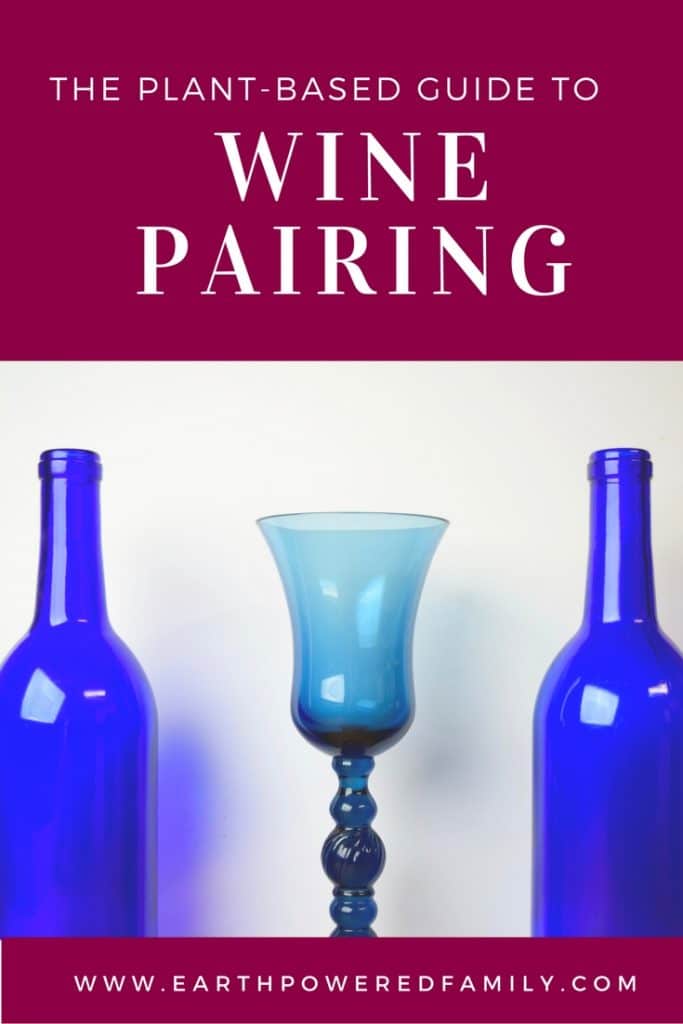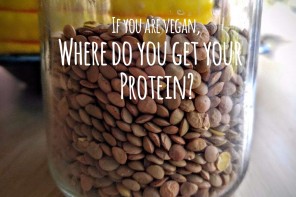I love wine. I love the variety of flavors, that they can be slowly sipped and savored, and of course because they contain alcohol. Because I am also a foodie, I am fascinated by food and wine pairings. As a busy mom, I am definitely not pairing wine to my food on a daily basis. As long as it has alcohol, it’ll do. But pairing the right wine to a meal can bring out all the right flavors in both.
When I first starting learning about food and wine pairings, it was hard to figure things out from a vegan perspective. Most pairing guides are based on pairing a wine to the star animal protein of each dish. But after some digging, I’ve discovered some good rules and general pairing ideas for plant based meals.
Tips, Tricks, and Basics:
- Go from light wines to heavy wines over the course of a meal, just as you would with food. Lighter appetizer and salads, followed by heavier and protein rich entrees, then finished with a very sweet dessert.
- Find the main flavors in a dish and either compliment the flavors, or contrast. In other words, choose similar flavors or the opposite in order to better highlight an ingredient. Sometimes a contrast can be refreshing, such as pairing a crisp and light wine with a heavy cream dish in order to create a refreshing balance.
- Consider the cooking method. For example, steaming gives food a lighter feel while grilling imparts more flavor and heaviness.
- Choose the food first. Wines vary tremendously. Although you could line up a whole row of Chardonnay, they would all taste different. If you have your food picked and know that you need a very dry Chardonnay, picking the right wine is a whole lot easier.
- Consider acidity and sweetness when choosing a wine. Wines also vary in acidity, so it’s important to know the acidity of a particular brand and year of wine before you choose it. Pair acidic wines with acidic foods for balance and to prevent the acid from one overpowering the other. As for sweetness, always go for a wine that is sweeter than the dish.
- Tannins are associated with body and heaviness of a wine. It can come across as bitterness, especially if the dish is too light. A good rule of thumb to remember is to pair heavy and high-tannin wines with plenty of protein.
Common Wine Pairings
Dry White
Sauvignon Blanc, Pinot Grigio, Pinot Blanc, Pinot Gris, Semillon
Salads, green vegetables, light pastas, ravioli, rich and heavy cream sauces, fresh herbs, coconut milk, rich and simple dishes
Rich White
Chardonnay, Viogner, Marsanne
Avocado, spinach, squash, grilled veggies, roasted veggies, sauteed veggies, BBQ, tomato sauces, lime, risotto, beans, nuts, corn, tropical fruit
Sweet White
Riesling, Moscato, Chenin Blanc
Spices, citrus, apples, Asian dishes, eggplant, enchiladas, guacamole, curries
Sparkling
Champagne, Prosecco, Cava, Franciacorta
Rich and creamy sauces, vegan butter, salty foods, fried foods, popcorn, pastry, Asian food
Rose
Pinot Noir Rose, Garnacha Rose, Sangiovese Rose
Bold spices, light salads, pasta, rice, olives, melon, hummus, sandwiches, Greek food, Mexican food, Thai food
Light Red
Pinot Noir, Gamay, St. Laurent
Cherries, Berries, cabbage, potatoes, mushrooms, light dishes, basil, thyme, mustard, sweet potato, pumpkin
Medium Red
Merlot, Sangiovese, Cabernet Franc, Barbera, Grenache
Mushrooms, pasta with tomato sauce, bold dishes, acidity, rice, citrus, olives, fresh herbs
Robust Red
Syrah, Zinfandel, Cabernet Sauvignon
Black pepper, squash, mushrooms, citrus, cream sauces, vinegar, rich and heavy dishes, pizza, spices, strong herbs
Dessert
Port, Sherry, Madeira
Dried fruit, nuts, desserts, baked goods, chocolate







Nicole! This is wonderful – thank you so much! I lead plant-based tours in the Piedmont region of northern Italy – the country’s premier wine region – and this will come in very handy on our next tour!
Best!
Tracie, Sage Plant-Powered Health
Thank you! I’m so glad it’s a helpful resource!